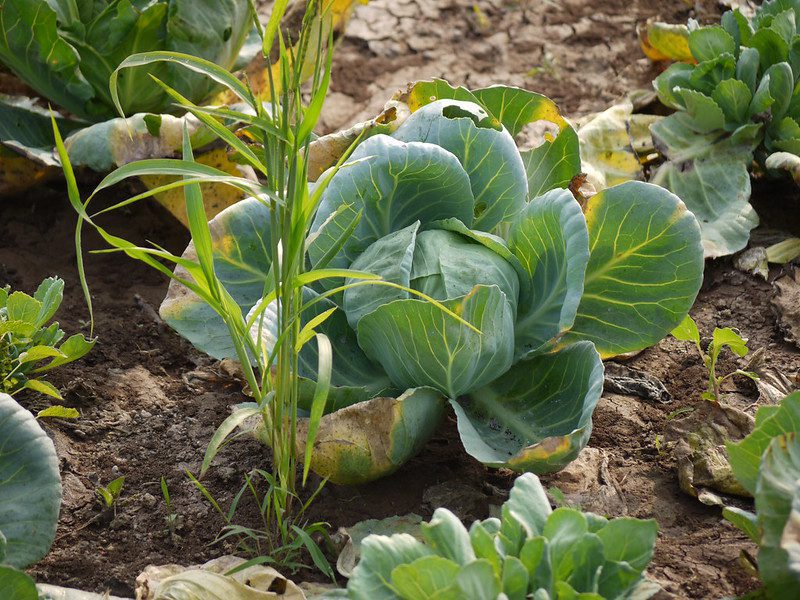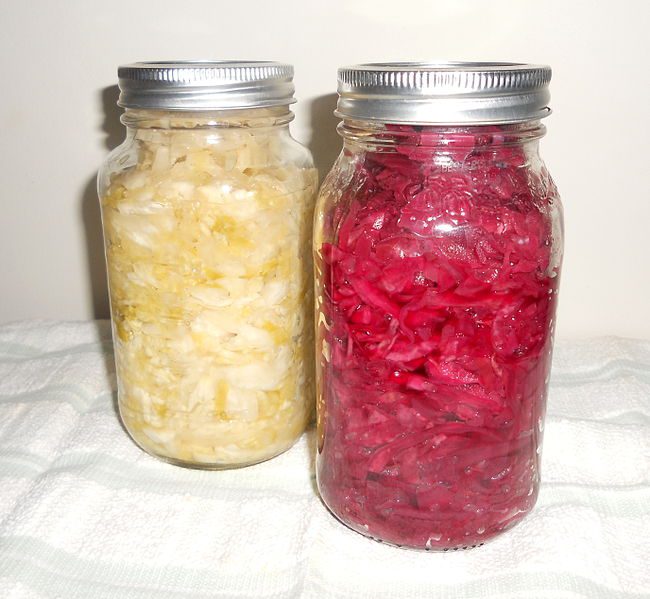
Scurvy is an ancient disease mentioned in the writings of Hippocrates and Pliny.1 It became particularly prevalent in the early days of the long exploring voyages, the Age of Sail, when an estimated two million sailors are believed to have died from it, more fatalities at sea than all other diseases, battles, storms, disasters, and shipwrecks combined.2 It was eventually eradicated by the introduction of a variety of antiscorbutic foods, notably the citrus fruit, famously used by James Lind.3 But other antiscorbutic foods such as sauerkraut or fermented cabbage have also been popular for thousands of years.2,3
The cabbage has grown wild in Europe for at least 4,000 years and was later domesticated, grown selectively for certain desirable properties. Widely eaten in many parts of the world, it was a table luxury for the Greeks and Romans, who also fermented it with wine. By the Middle Ages, cabbage had become a prominent part of European fare, and by the time of the Renaissance new varieties had been introduced, mostly by Germanic-speaking peoples. Eventually the common cabbage (Brassica oleracea) became a staple food in many parts of Europe, eaten raw, cooked, steamed, roasted, sautéed, in salads, as wraps for minced meat, in rolls, or in national foods such as borscht, kapusta, or sarmale. The cabbage is low in calories but high in fiber, antioxidants, minerals, anticoagulants, vitamins, and beta-carotene. It has been claimed, sometimes with little proof, to promote healthy digestion, lower cholesterol levels, strengthen the immune system, fight infections, prevent cancer, and help iron absorption. Eating cabbage soup is said to promote weight loss. Several physicians in history are recorded to have prescribed eating cabbages or drinking their juice for rheumatism, sore throat, mushroom poisoning, and many other conditions.
The cabbage is part of the genus Brassica, of which there are some 37 species such as broccoli, Brussels sprouts, cauliflower, kale, kohlrabi, and turnips. These species have also been domesticated or planted selectively for their most desirable qualities since time immemorial. The cabbage, as we know it, can vary in size from that of a small soccer ball to much greater dimensions. It consists of 92% water, 6% carbohydrate, 1% protein, and negligible amounts of fat. Its leaves also contain a pigment called anthocyanin that functions like litmus paper, changing its color from green in alkaline media to red in acid surroundings. The word Brassica itself is derived from the Celtic bresic, a word for cabbage which itself comes from old French caboche or caboce, all meaning head. The modern word in German is kraut, an appellation used derogatorily by the British for their former enemies. In acronym language, CABBAGE stands for “coronary artery bypass graft surgery.”

The practice of eating cabbage in its fermented form is thousands of years oldand was popular during the early Korean and Chinese dynasties.2 Workers toiling to build the Great Wall in particularly harsh winters learned to hide their food in the snow and, returning to the construction site several months later, found that their cabbages, preserved in rice wine,4 had survived through the process of fermentation. It is also surmised that later invaders of Europe, Huns, Mongols, and Tatars, brought fermented cabbage with them2 under their saddles or in wooden boxes or barrels.Around the sixteenth century, the Germans created sauerkraut by storing cabbage leaves anaerobically in brine or wine. The Germans dubbed this preparation sauerkraut (sour cabbage), which becomes choucroute in French and was popular in Alsace. After the war with Prussia in 1870, Alsace was ceded to the German Empire, causing an exodus of Alsatians to France. Among them were Léonard and Pétronille Lipp, who opened a brasserie on Boulevard Saint-Germain in Paris, and there were many others. Still, the best cabbage dishes are served at the confluence of German and French culture such as in Strasbourg, Alsace. Elsewhere it remains favored by some and not others, for there is no accounting of tastes, chaqun a son gout, as the French put it.
See also
- JMS Pearce. Scurvy before James Lind. Hektoen International History, Fall 2019.
- Richard de Grijs. Plague of the Sea and the Spoyle of Mariners – A brief history of fermented cabbage as antiscorbutic. Hektoen International History, Spring 2021.
- JMS Pearce: The mysteries of James Lind and scurvy. Hektoen International Physicians of Note, Fall 2016.
- Harry Pincus. Sauerkraut: It all began in China. New York Times, November 14, 1979. https://www.nytimes.com/1979/11/14/archives/sauerkraut-it-all-began-in-china.html.

Leave a Reply